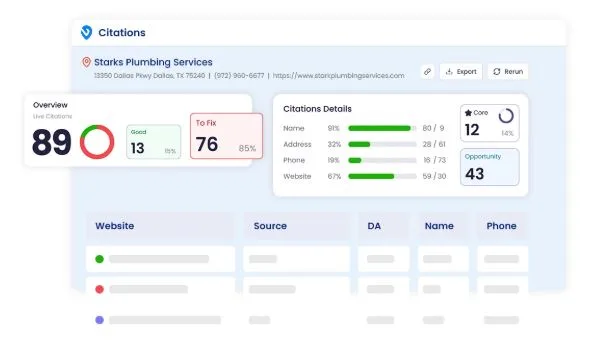Institutional Investors Are Watching the AI Girlfriend Market: Projections Range to $24B as Category Defies Easy Valuation
Market researchers can’t agree on the size of the AI girlfriend market, and that’s precisely why institutional investors are paying attention. Projections range from conservative estimates exceeding $1 billion by 2027 to aggressive forecasts of $24 billion by the same year, with mid-range analysts at TRG Data Centers projecting the global AI companion market will reach $9.5 billion by 2028, up from $2.8 billion in 2024. The 20x spread between bull and bear cases signals the kind of analytical uncertainty that typically precedes significant market opportunities.
What’s not uncertain: funding in the space surged from $7 million in 2021 to $299 million – a 4,000%+ increase that suggests smart money is positioning ahead of consensus. Notably, some of the fastest-growing AI girlfriend platforms haven’t taken outside funding, suggesting organic traction that institutional investors are only beginning to recognize. Regardless of which projection proves accurate, the directional momentum is unmistakable.
Why Projections Vary and Why It Matters
The valuation spread reflects legitimate methodological challenges rather than weak fundamentals. Conservative $1 billion estimates focus exclusively on pure-play AI companion platforms like Replika and Nomi. Mid-range $9.5 billion projections include the broader AI companionship category. Aggressive $24 billion forecasts incorporate AI features being integrated into existing dating and social platforms.
Geographic scope and revenue model ambiguity further complicate comparisons. U.S.-focused projections skew lower, while global estimates—particularly those including Asian markets—run considerably higher. Some platforms operate pure subscription models, others layer in-app purchases and virtual goods, and future entrants may pursue advertising-supported tiers.
User behavior, however, leaves little doubt about trajectory. Google searches for “AI Girlfriend” increased 2,400% between 2022 and 2024, according to data compiled by Skimai. In the U.S. alone, searches for “AI girlfriend” and “AI dating assistant” jumped 525% in a single year. App downloads for AI companion platforms surged 300% since 2023.
When projections vary this widely but user adoption metrics align this consistently, the spread may represent opportunity alongside risk.
Unit Economics Driving Institutional Interest
Margin profiles explain why institutional capital is entering despite valuation uncertainty. AI companion platforms demonstrate gross margins in the 70-80% range, compared to 60-65% for established dating apps. Customer acquisition costs run considerably lower—organic and viral growth mechanisms keep CAC in the $5-15 range, versus $30-50+ for dating apps dependent on paid user acquisition.
Early lifetime value data suggests 12-18 month average subscription duration, compared to 6-9 months for dating app premium tiers. Average revenue per user ranges from $10-30 monthly across platforms, with reported monthly churn rates of 20-30% versus 35-45% for dating apps.
Compare these metrics to publicly traded Match Group: 14.1 million paying users (down 5% year-over-year in Q2 2025), $20 revenue per payer, 36% adjusted operating income margin. Match demonstrates the mature state of dating app economics—modest growth, solid margins, persistent user acquisition challenges. AI companion platforms show user growth exceeding 300% year-over-year with superior engagement metrics and comparable monetization.
In contrast to Match stats, Replika has surpassed 10 million users, according to TRG Data Centers. Character.AI recorded 97 million monthly visits in March 2024, putting it in the same traffic tier as Reddit. Approximately 55% of AI companion users interact daily, compared to 20-30% daily active user ratios typical of dating apps.
Better unit economics plus faster growth typically command premium valuations, yet there is the warranted consideration of total addressable market size.
The TAM Expansion Thesis
The most significant investment debate centers on the total addressable market. Bears frame AI companions as zero-sum with dating apps. Bulls argue for TAM expansion, positioning AI companions as addressing broader needs than dating alone.
The expansion thesis carries weight. Dating apps serve perhaps 200 million global users—people actively seeking romantic partners. Chronic loneliness affects over 1 billion people according to public health data. The therapy and mental wellness market exceeds $4 billion annually but faces structural supply constraints.
User demographics support the expansion argument. AI companion platforms over-index with Gen Z users, neurodivergent populations, and rural residents – segments underserved by traditional dating apps. Users report approaching AI girlfriends as companions for emotional decompression, creative collaboration, language practice, and judgment-free conversation.
While market expansion doesn’t guarantee category success, it shapes the equation for investors modeling potential outcomes. Even as projections vary, they directionally indicate a larger addressable market than traditional dating alone.
Risk Factors Worth Monitoring
Institutional skeptics raise legitimate concerns. Regulatory risk tops the list age verification requirements, data privacy regulations, and content moderation standards will inevitably tighten. Social stigma remains significant; the “AI girlfriend” framing triggers negative reactions that may limit mainstream adoption and create reputational risk for investors. And technological limitations present execution risk. Current large language models excel at conversation but can’t replicate the full spectrum of human connection.
These risks are real but familiar. Similar concerns faced dating apps and social media platforms that ultimately achieved scale. The question isn’t whether risks exist but whether they’re category-killing or simply obstacles successful platforms will navigate.
What Institutional Investors Are Watching
Two notable data points will clarify market trajectory: retention and free to paid conversion rates.
Cohort retention curves beyond 12 months represent a critical metric. If retention rates hold beyond a year, that validates initial subscription longevity assumptions. Heavy churn would challenge bull case economics.
Conversion rates from free to paid tiers matter significantly in identifying perceived value. Stabilizing conversion in the 5-10% range would support projections; noting above average performance to reported conversions of other Lifestyle apps on the Apple App store.
Conversely, engagement metric deterioration after initial surge would suggest novelty-driven rather than utility-driven adoption. Customer acquisition costs rising as platforms exhaust organic channels would pressure unit economics.
Bottom Line
The 20x range in market projections reflects genuine analytical uncertainty rather than weak fundamentals. User growth metrics, engagement data, unit economics, and structural demand drivers all trend positively, but questions remain about sustainability and scale.
The variance in projections reflects the challenge of valuing an emerging category before clear leaders and business models emerge. Private market activity suggests institutional investors are making early positioning decisions despite this uncertainty. Whether this becomes a $5 billion or $25 billion category will depend on factors that remain unresolved – regulatory frameworks, mainstream adoption curves, and competitive dynamics.






